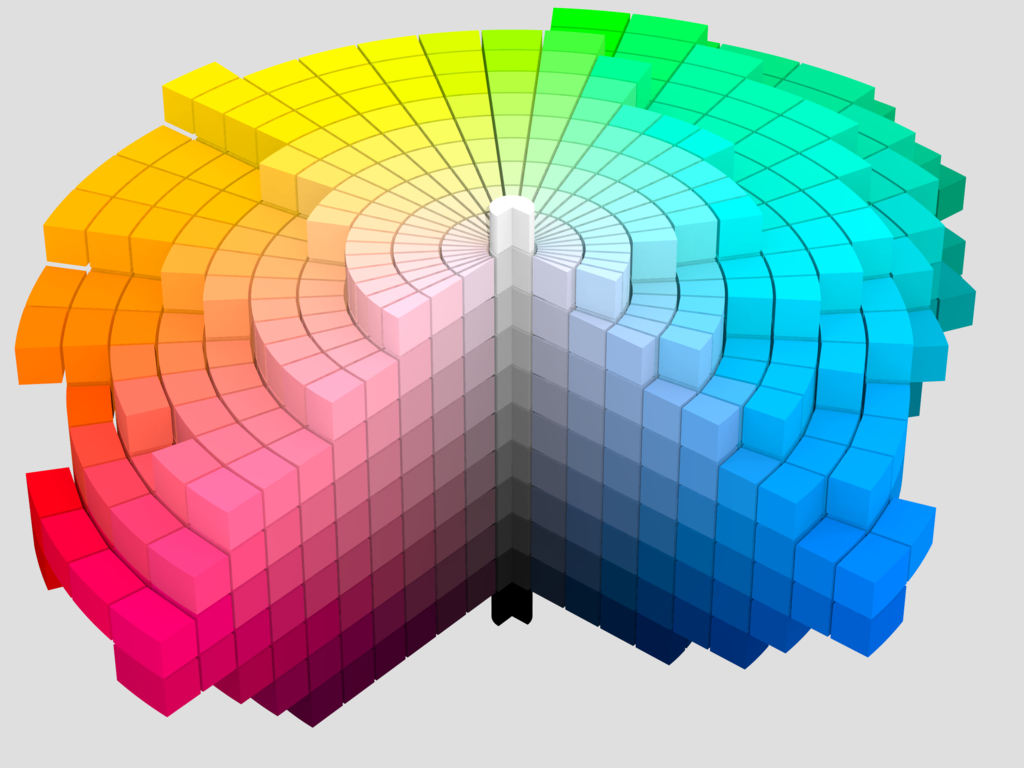As fixer1234 correctly explained, white is not simply "colorless" or "transparent", but rather "allit reflects light of all colors combined". By mixing pure red with pure white, you end up with 50% red light combined with 50% all colorswavelengths combined, which makes the red appear lighter (what we commonly call "pink").
There are 3 dimensional color systems like the Munsell color system that take the amount of light into account. It looks like this:
- The center top point (white) is an even mix of all wavelengths of light.
- The center bottom point (black) is no light at all
- The outermost points represent light of one single wavelength. This is the pure color.
Additive Color Mixing
If you shine a spotlight with a red wavelength filter on a white wall, you'll end up with a pure red color, like shown in the outer ring of the diagram.
If you dim the red spotlight (remove light), you make the red appear darker, moving towards the bottom of the diagram.
If you shine an unfiltered white spotlight at the same wall, you mix red light with white light, moving towards the top of the diagram.
If you put a wavelength filter of the color that's opposite of red on the second spotlight, you desaturate the color, moving towards the center of the diagram.
Substractive Color Mixing
If you put paint with a pure red pigment on a white wall, the wall (ideally) reflects only red light and absorbs all other wavelengths, like shown in the outer ring of the diagram.
If you mix the red paint with something that absorbs light instead of reflecting it (black paint), the wall reflects less of the red light, making it appear darker, moving towards the bottom of the diagram.
If you mix the red paint with something that reflects all wavelengths of light (white paint), the wall reflects all the red light and additionally some of all other wavelengths, making it appear lighter and moving towards the top of the diagram.
If you mix the red paint with the paint that is directly opposite in the diagram (green paint), both reflect a mix of different wavelengths, moving towards the center of the diagram. Red paint reflects only red light, but absorbs green light. Green paint reflects only green light but absorbs red light. The result is a mix of different wavelengths, but some of it gets absorbed, putting you in the center between black and white.
